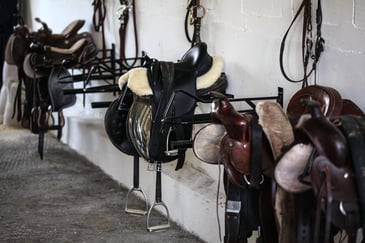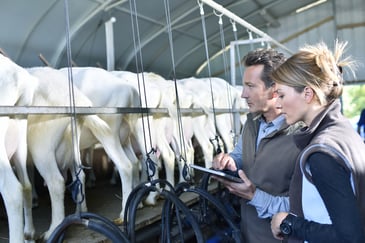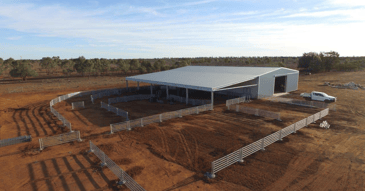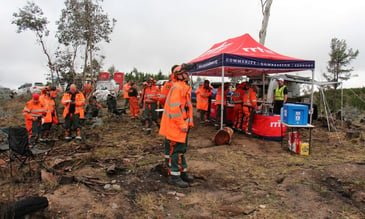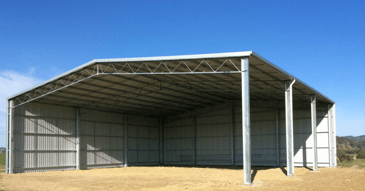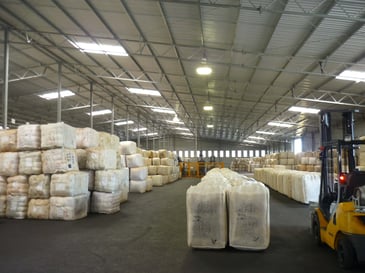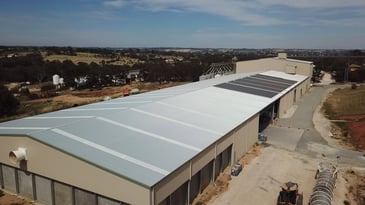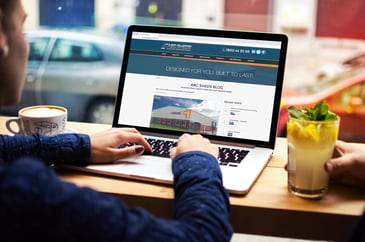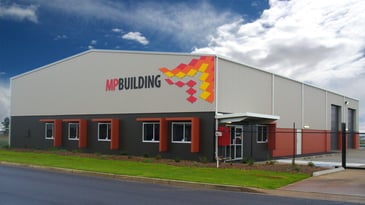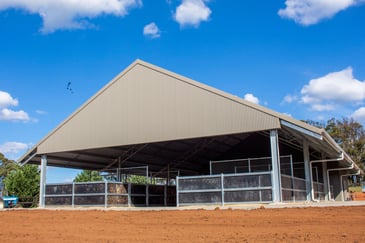Pouring concrete footings for your steel shed is just the beginning. What happens next determines whether your foundation will support your structure for decades or start failing within a few years. The curing process is where concrete develops its strength, and cutting it short is a mistake that's expensive to fix later. Understanding concrete curing times Concrete doesn't just "dry out". It undergoes a chemical reaction called hydration, where water in the mix reacts with cement to form crystalline structures. This process continues for months, but the bulk of the strength gain happens in the first 28 days. At 28 days, concrete reaches its design strength, the figure that engineers use when calculating load capacities and structural requirements. This is the gold standard, the point where your concrete has achieved 100% of its intended compressive strength. The concrete gains strength progressively throughout the curing period. At approximately 7 days, it has reached about 75% of its full strength. At 14 days, roughly 90%. The curve flattens as you approach the 28-day mark, with relatively minor gains in those final weeks. The 7-day rule for steel shed construction For most steel sheds Australia-wide, you can begin building after 7 days of proper curing. At this point, concrete has gained sufficient strength for erecting steel frame sheds and starting the construction process. This 7-day period represents the point where concrete can handle the loads imposed during construction without risk of damage or compromised structural integrity. Your engineer and concrete supplier will specify exact requirements based on your project, local climate, and the specific concrete mix being used. Before pouring any concrete, make sure you've sorted your approvals. Check out our guide on council approval for farm sheds to ensure you're meeting local requirements. Why moisture matters during curing The hydration process needs water to continue. Without adequate moisture, the chemical reactions stop prematurely, and you're left with weak concrete that cracks easily and fails to reach its design strength. The surface becomes dusty and friable, whilst the interior may not have cured properly either. This is where many rural sheds projects go wrong. People assume that once concrete is poured and finished, the job is done. In reality, the most critical phase is just beginning. Practical curing methods Regular watering This is the simplest approach. Spray the footings three to four times daily in hot weather, keeping the surface damp without creating puddles. In cooler conditions, twice daily may be sufficient. Wet coverings Wet coverings provide consistent moisture retention. Hessian sacks or old blankets laid over the concrete and kept wet create a humid environment that slows evaporation. You'll need to re-wet the coverings regularly, but less frequently than direct spraying. Plastic sheeting This method traps moisture by covering the concrete completely. Weight down the edges to prevent wind from getting underneath. Watch for heat buildup in summer, particularly with clear plastic, which can create a greenhouse effect. Curing compounds These are spray-on membranes that seal the surface and prevent moisture loss. Your concrete supplier can recommend products suitable for your climate and concrete mix. They're particularly useful for large pours where manual watering would be impractical. How weather affects curing time Australian conditions present challenges at both extremes. Hot days, low humidity, and strong winds pull moisture from fresh concrete faster than it can hydrate properly. Summer temperatures regularly exceed 30°C across most of the country, making frequent watering absolutely necessary. You may need to water four or five times daily during heatwaves. Cold weather creates the opposite problem. Below 15°C, chemical reactions slow significantly, and you may need to extend curing beyond 7 days before starting construction. Below 5°C, you'll need special cold-weather additives and potentially heating equipment or insulated blankets. If you're building Aus steel sheds in alpine areas during winter or coastal regions with salt-laden winds, discuss specific requirements with your supplier before pouring. These conditions affect both curing and long-term durability. What you can (and can't) do after 7 days Once you've passed the one-week mark with proper curing, frame erection can begin. The steel shed frame doesn't create concentrated point loads during installation, and concrete at 75% strength can easily handle the construction process. However, keep heavy machinery off the footings for at least two weeks. Forklifts, excavators, and loaded trucks create point loads that can damage partially cured concrete. If equipment access is necessary, use timber or steel plates to distribute weight across a larger surface area. Avoid dropping heavy materials directly onto the footings during the second week. Handle roof sheets, purlins, and other components carefully during unloading and installation. Impact loads are particularly damaging to concrete that hasn't reached full strength. Wall cladding and roofing work is generally fine after 7 days. Most standard construction activities during the build phase are well within the capacity of properly cured 7-day concrete. Coordinate with your builder to ensure loads are distributed appropriately across the footing system. The real cost of impatience Starting construction too early leads to cracked footings, uneven settlement, and structural movement. Your steel frame sheds can twist or rack as the foundation shifts, creating stresses the structure was never designed to handle. Doors stop closing properly, cladding develops gaps, and water gets in where it shouldn't. In severe cases, you're looking at structural repairs or complete footing replacement, both of which cost far more than the week you tried to save. Plan your timeline properly Book your frame installation for at least 8-10 days after the concrete pour. This gives you buffer time for weather delays whilst ensuring adequate curing. Most builders and shed suppliers already work to schedules that account for standard curing periods. Seven days of patience protect decades of investment, so do it right the first time. Ready to start planning your new steel shed? Use our Shed Builder tool to design exactly what you need and get an accurate quote for your project.
Pouring concrete footings for your steel shed is just the beginning. What happens next determines whether your foundation will support your structure for decades or start failing within a few years. The curing process is where concrete develops its strength, and cutting it short is a mistake that's expensive to fix later. Understanding concrete curing times Concrete doesn't just "dry out". It undergoes a chemical reaction called hydration, where water in the mix reacts with cement to form crystalline structures. This process continues for months, but the bulk of the strength gain happens in the first 28 days. At 28 days, concrete reaches its design strength, the figure that engineers use when calculating load capacities and structural requirements. This is the gold standard, the point where your concrete has achieved 100% of its intended compressive strength. The concrete gains strength progressively throughout the curing period. At approximately 7 days, it has reached about 75% of its full strength. At 14 days, roughly 90%. The curve flattens as you approach the 28-day mark, with relatively minor gains in those final weeks. The 7-day rule for steel shed construction For most steel sheds Australia-wide, you can begin building after 7 days of proper curing. At this point, concrete has gained sufficient strength for erecting steel frame sheds and starting the construction process. This 7-day period represents the point where concrete can handle the loads imposed during construction without risk of damage or compromised structural integrity. Your engineer and concrete supplier will specify exact requirements based on your project, local climate, and the specific concrete mix being used. Before pouring any concrete, make sure you've sorted your approvals. Check out our guide on council approval for farm sheds to ensure you're meeting local requirements. Why moisture matters during curing The hydration process needs water to continue. Without adequate moisture, the chemical reactions stop prematurely, and you're left with weak concrete that cracks easily and fails to reach its design strength. The surface becomes dusty and friable, whilst the interior may not have cured properly either. This is where many rural sheds projects go wrong. People assume that once concrete is poured and finished, the job is done. In reality, the most critical phase is just beginning. Practical curing methods Regular watering This is the simplest approach. Spray the footings three to four times daily in hot weather, keeping the surface damp without creating puddles. In cooler conditions, twice daily may be sufficient. Wet coverings Wet coverings provide consistent moisture retention. Hessian sacks or old blankets laid over the concrete and kept wet create a humid environment that slows evaporation. You'll need to re-wet the coverings regularly, but less frequently than direct spraying. Plastic sheeting This method traps moisture by covering the concrete completely. Weight down the edges to prevent wind from getting underneath. Watch for heat buildup in summer, particularly with clear plastic, which can create a greenhouse effect. Curing compounds These are spray-on membranes that seal the surface and prevent moisture loss. Your concrete supplier can recommend products suitable for your climate and concrete mix. They're particularly useful for large pours where manual watering would be impractical. How weather affects curing time Australian conditions present challenges at both extremes. Hot days, low humidity, and strong winds pull moisture from fresh concrete faster than it can hydrate properly. Summer temperatures regularly exceed 30°C across most of the country, making frequent watering absolutely necessary. You may need to water four or five times daily during heatwaves. Cold weather creates the opposite problem. Below 15°C, chemical reactions slow significantly, and you may need to extend curing beyond 7 days before starting construction. Below 5°C, you'll need special cold-weather additives and potentially heating equipment or insulated blankets. If you're building Aus steel sheds in alpine areas during winter or coastal regions with salt-laden winds, discuss specific requirements with your supplier before pouring. These conditions affect both curing and long-term durability. What you can (and can't) do after 7 days Once you've passed the one-week mark with proper curing, frame erection can begin. The steel shed frame doesn't create concentrated point loads during installation, and concrete at 75% strength can easily handle the construction process. However, keep heavy machinery off the footings for at least two weeks. Forklifts, excavators, and loaded trucks create point loads that can damage partially cured concrete. If equipment access is necessary, use timber or steel plates to distribute weight across a larger surface area. Avoid dropping heavy materials directly onto the footings during the second week. Handle roof sheets, purlins, and other components carefully during unloading and installation. Impact loads are particularly damaging to concrete that hasn't reached full strength. Wall cladding and roofing work is generally fine after 7 days. Most standard construction activities during the build phase are well within the capacity of properly cured 7-day concrete. Coordinate with your builder to ensure loads are distributed appropriately across the footing system. The real cost of impatience Starting construction too early leads to cracked footings, uneven settlement, and structural movement. Your steel frame sheds can twist or rack as the foundation shifts, creating stresses the structure was never designed to handle. Doors stop closing properly, cladding develops gaps, and water gets in where it shouldn't. In severe cases, you're looking at structural repairs or complete footing replacement, both of which cost far more than the week you tried to save. Plan your timeline properly Book your frame installation for at least 8-10 days after the concrete pour. This gives you buffer time for weather delays whilst ensuring adequate curing. Most builders and shed suppliers already work to schedules that account for standard curing periods. Seven days of patience protect decades of investment, so do it right the first time. Ready to start planning your new steel shed? Use our Shed Builder tool to design exactly what you need and get an accurate quote for your project. Pouring concrete footings for your steel shed is just the beginning. What happens next determines whether your foundation will support your structure for decades or start failing within a few years. The curing process is where concrete develops its strength, and cutting it short is a mistake that's expensive to fix later. Understanding concrete curing times Concrete doesn't just "dry out". It undergoes a chemical reaction called hydration, where water in the mix reacts with cement to form crystalline structures. This process continues for months, but the bulk of the strength gain happens in the first 28 days. At 28 days, concrete reaches its design strength, the figure that engineers use when calculating load capacities and structural requirements. This is the gold standard, the point where your concrete has achieved 100% of its intended compressive strength. The concrete gains strength progressively throughout the curing period. At approximately 7 days, it has reached about 75% of its full strength. At 14 days, roughly 90%. The curve flattens as you approach the 28-day mark, with relatively minor gains in those final weeks. The 7-day rule for steel shed construction For most steel sheds Australia-wide, you can begin building after 7 days of proper curing. At this point, concrete has gained sufficient strength for erecting steel frame sheds and starting the construction process. This 7-day period represents the point where concrete can handle the loads imposed during construction without risk of damage or compromised structural integrity. Your engineer and concrete supplier will specify exact requirements based on your project, local climate, and the specific concrete mix being used. Before pouring any concrete, make sure you've sorted your approvals. Check out our guide on council approval for farm sheds to ensure you're meeting local requirements. Why moisture matters during curing The hydration process needs water to continue. Without adequate moisture, the chemical reactions stop prematurely, and you're left with weak concrete that cracks easily and fails to reach its design strength. The surface becomes dusty and friable, whilst the interior may not have cured properly either. This is where many rural sheds projects go wrong. People assume that once concrete is poured and finished, the job is done. In reality, the most critical phase is just beginning. Practical curing methods Regular watering This is the simplest approach. Spray the footings three to four times daily in hot weather, keeping the surface damp without creating puddles. In cooler conditions, twice daily may be sufficient. Wet coverings Wet coverings provide consistent moisture retention. Hessian sacks or old blankets laid over the concrete and kept wet create a humid environment that slows evaporation. You'll need to re-wet the coverings regularly, but less frequently than direct spraying. Plastic sheeting This method traps moisture by covering the concrete completely. Weight down the edges to prevent wind from getting underneath. Watch for heat buildup in summer, particularly with clear plastic, which can create a greenhouse effect. Curing compounds These are spray-on membranes that seal the surface and prevent moisture loss. Your concrete supplier can recommend products suitable for your climate and concrete mix. They're particularly useful for large pours where manual watering would be impractical. How weather affects curing time Australian conditions present challenges at both extremes. Hot days, low humidity, and strong winds pull moisture from fresh concrete faster than it can hydrate properly. Summer temperatures regularly exceed 30°C across most of the country, making frequent watering absolutely necessary. You may need to water four or five times daily during heatwaves. Cold weather creates the opposite problem. Below 15°C, chemical reactions slow significantly, and you may need to extend curing beyond 7 days before starting construction. Below 5°C, you'll need special cold-weather additives and potentially heating equipment or insulated blankets. If you're building Aus steel sheds in alpine areas during winter or coastal regions with salt-laden winds, discuss specific requirements with your supplier before pouring. These conditions affect both curing and long-term durability. What you can (and can't) do after 7 days Once you've passed the one-week mark with proper curing, frame erection can begin. The steel shed frame doesn't create concentrated point loads during installation, and concrete at 75% strength can easily handle the construction process. However, keep heavy machinery off the footings for at least two weeks. Forklifts, excavators, and loaded trucks create point loads that can damage partially cured concrete. If equipment access is necessary, use timber or steel plates to distribute weight across a larger surface area. Avoid dropping heavy materials directly onto the footings during the second week. Handle roof sheets, purlins, and other components carefully during unloading and installation. Impact loads are particularly damaging to concrete that hasn't reached full strength. Wall cladding and roofing work is generally fine after 7 days. Most standard construction activities during the build phase are well within the capacity of properly cured 7-day concrete. Coordinate with your builder to ensure loads are distributed appropriately across the footing system. The real cost of impatience Starting construction too early leads to cracked footings, uneven settlement, and structural movement. Your steel frame sheds can twist or rack as the foundation shifts, creating stresses the structure was never designed to handle. Doors stop closing properly, cladding develops gaps, and water gets in where it shouldn't. In severe cases, you're looking at structural repairs or complete footing replacement, both of which cost far more than the week you tried to save. Plan your timeline properly Book your frame installation for at least 8-10 days after the concrete pour. This gives you buffer time for weather delays whilst ensuring adequate curing. Most builders and shed suppliers already work to schedules that account for standard curing periods. Seven days of patience protect decades of investment, so do it right the first time. Ready to start planning your new steel shed? Use our Shed Builder tool to design exactly what you need and get an accurate quote for your project. Pouring concrete footings for your steel shed is just the beginning. What happens next determines whether your foundation will support your structure for decades or start failing within a few years. The curing process is where concrete develops its strength, and cutting it short is a mistake that's expensive to fix later. Understanding concrete curing times Concrete doesn't just "dry out". It undergoes a chemical reaction called hydration, where water in the mix reacts with cement to form crystalline structures. This process continues for months, but the bulk of the strength gain happens in the first 28 days. At 28 days, concrete reaches its design strength, the figure that engineers use when calculating load capacities and structural requirements. This is the gold standard, the point where your concrete has achieved 100% of its intended compressive strength. The concrete gains strength progressively throughout the curing period. At approximately 7 days, it has reached about 75% of its full strength. At 14 days, roughly 90%. The curve flattens as you approach the 28-day mark, with relatively minor gains in those final weeks. The 7-day rule for steel shed construction For most steel sheds Australia-wide, you can begin building after 7 days of proper curing. At this point, concrete has gained sufficient strength for erecting steel frame sheds and starting the construction process. This 7-day period represents the point where concrete can handle the loads imposed during construction without risk of damage or compromised structural integrity. Your engineer and concrete supplier will specify exact requirements based on your project, local climate, and the specific concrete mix being used. Before pouring any concrete, make sure you've sorted your approvals. Check out our guide on council approval for farm sheds to ensure you're meeting local requirements. Why moisture matters during curing The hydration process needs water to continue. Without adequate moisture, the chemical reactions stop prematurely, and you're left with weak concrete that cracks easily and fails to reach its design strength. The surface becomes dusty and friable, whilst the interior may not have cured properly either. This is where many rural sheds projects go wrong. People assume that once concrete is poured and finished, the job is done. In reality, the most critical phase is just beginning. Practical curing methods Regular watering This is the simplest approach. Spray the footings three to four times daily in hot weather, keeping the surface damp without creating puddles. In cooler conditions, twice daily may be sufficient. Wet coverings Wet coverings provide consistent moisture retention. Hessian sacks or old blankets laid over the concrete and kept wet create a humid environment that slows evaporation. You'll need to re-wet the coverings regularly, but less frequently than direct spraying. Plastic sheeting This method traps moisture by covering the concrete completely. Weight down the edges to prevent wind from getting underneath. Watch for heat buildup in summer, particularly with clear plastic, which can create a greenhouse effect. Curing compounds These are spray-on membranes that seal the surface and prevent moisture loss. Your concrete supplier can recommend products suitable for your climate and concrete mix. They're particularly useful for large pours where manual watering would be impractical. How weather affects curing time Australian conditions present challenges at both extremes. Hot days, low humidity, and strong winds pull moisture from fresh concrete faster than it can hydrate properly. Summer temperatures regularly exceed 30°C across most of the country, making frequent watering absolutely necessary. You may need to water four or five times daily during heatwaves. Cold weather creates the opposite problem. Below 15°C, chemical reactions slow significantly, and you may need to extend curing beyond 7 days before starting construction. Below 5°C, you'll need special cold-weather additives and potentially heating equipment or insulated blankets. If you're building Aus steel sheds in alpine areas during winter or coastal regions with salt-laden winds, discuss specific requirements with your supplier before pouring. These conditions affect both curing and long-term durability. What you can (and can't) do after 7 days Once you've passed the one-week mark with proper curing, frame erection can begin. The steel shed frame doesn't create concentrated point loads during installation, and concrete at 75% strength can easily handle the construction process. However, keep heavy machinery off the footings for at least two weeks. Forklifts, excavators, and loaded trucks create point loads that can damage partially cured concrete. If equipment access is necessary, use timber or steel plates to distribute weight across a larger surface area. Avoid dropping heavy materials directly onto the footings during the second week. Handle roof sheets, purlins, and other components carefully during unloading and installation. Impact loads are particularly damaging to concrete that hasn't reached full strength. Wall cladding and roofing work is generally fine after 7 days. Most standard construction activities during the build phase are well within the capacity of properly cured 7-day concrete. Coordinate with your builder to ensure loads are distributed appropriately across the footing system. The real cost of impatience Starting construction too early leads to cracked footings, uneven settlement, and structural movement. Your steel frame sheds can twist or rack as the foundation shifts, creating stresses the structure was never designed to handle. Doors stop closing properly, cladding develops gaps, and water gets in where it shouldn't. In severe cases, you're looking at structural repairs or complete footing replacement, both of which cost far more than the week you tried to save. Plan your timeline properly Book your frame installation for at least 8-10 days after the concrete pour. This gives you buffer time for weather delays whilst ensuring adequate curing. Most builders and shed suppliers already work to schedules that account for standard curing periods. Seven days of patience protect decades of investment, so do it right the first time. Ready to start planning your new steel shed? Use our Shed Builder tool to design exactly what you need and get an accurate quote for your project. Pouring concrete footings for your steel shed is just the beginning. What happens next determines whether your foundation will support your structure for decades or start failing within a few years. The curing process is where concrete develops its strength, and cutting it short is a mistake that's expensive to fix later. Understanding concrete curing times Concrete doesn't just "dry out". It undergoes a chemical reaction called hydration, where water in the mix reacts with cement to form crystalline structures. This process continues for months, but the bulk of the strength gain happens in the first 28 days. At 28 days, concrete reaches its design strength, the figure that engineers use when calculating load capacities and structural requirements. This is the gold standard, the point where your concrete has achieved 100% of its intended compressive strength. The concrete gains strength progressively throughout the curing period. At approximately 7 days, it has reached about 75% of its full strength. At 14 days, roughly 90%. The curve flattens as you approach the 28-day mark, with relatively minor gains in those final weeks. The 7-day rule for steel shed construction For most steel sheds Australia-wide, you can begin building after 7 days of proper curing. At this point, concrete has gained sufficient strength for erecting steel frame sheds and starting the construction process. This 7-day period represents the point where concrete can handle the loads imposed during construction without risk of damage or compromised structural integrity. Your engineer and concrete supplier will specify exact requirements based on your project, local climate, and the specific concrete mix being used. Before pouring any concrete, make sure you've sorted your approvals. Check out our guide on council approval for farm sheds to ensure you're meeting local requirements. Why moisture matters during curing The hydration process needs water to continue. Without adequate moisture, the chemical reactions stop prematurely, and you're left with weak concrete that cracks easily and fails to reach its design strength. The surface becomes dusty and friable, whilst the interior may not have cured properly either. This is where many rural sheds projects go wrong. People assume that once concrete is poured and finished, the job is done. In reality, the most critical phase is just beginning. Practical curing methods Regular watering This is the simplest approach. Spray the footings three to four times daily in hot weather, keeping the surface damp without creating puddles. In cooler conditions, twice daily may be sufficient. Wet coverings Wet coverings provide consistent moisture retention. Hessian sacks or old blankets laid over the concrete and kept wet create a humid environment that slows evaporation. You'll need to re-wet the coverings regularly, but less frequently than direct spraying. Plastic sheeting This method traps moisture by covering the concrete completely. Weight down the edges to prevent wind from getting underneath. Watch for heat buildup in summer, particularly with clear plastic, which can create a greenhouse effect. Curing compounds These are spray-on membranes that seal the surface and prevent moisture loss. Your concrete supplier can recommend products suitable for your climate and concrete mix. They're particularly useful for large pours where manual watering would be impractical. How weather affects curing time Australian conditions present challenges at both extremes. Hot days, low humidity, and strong winds pull moisture from fresh concrete faster than it can hydrate properly. Summer temperatures regularly exceed 30°C across most of the country, making frequent watering absolutely necessary. You may need to water four or five times daily during heatwaves. Cold weather creates the opposite problem. Below 15°C, chemical reactions slow significantly, and you may need to extend curing beyond 7 days before starting construction. Below 5°C, you'll need special cold-weather additives and potentially heating equipment or insulated blankets. If you're building Aus steel sheds in alpine areas during winter or coastal regions with salt-laden winds, discuss specific requirements with your supplier before pouring. These conditions affect both curing and long-term durability. What you can (and can't) do after 7 days Once you've passed the one-week mark with proper curing, frame erection can begin. The steel shed frame doesn't create concentrated point loads during installation, and concrete at 75% strength can easily handle the construction process. However, keep heavy machinery off the footings for at least two weeks. Forklifts, excavators, and loaded trucks create point loads that can damage partially cured concrete. If equipment access is necessary, use timber or steel plates to distribute weight across a larger surface area. Avoid dropping heavy materials directly onto the footings during the second week. Handle roof sheets, purlins, and other components carefully during unloading and installation. Impact loads are particularly damaging to concrete that hasn't reached full strength. Wall cladding and roofing work is generally fine after 7 days. Most standard construction activities during the build phase are well within the capacity of properly cured 7-day concrete. Coordinate with your builder to ensure loads are distributed appropriately across the footing system. The real cost of impatience Starting construction too early leads to cracked footings, uneven settlement, and structural movement. Your steel frame sheds can twist or rack as the foundation shifts, creating stresses the structure was never designed to handle. Doors stop closing properly, cladding develops gaps, and water gets in where it shouldn't. In severe cases, you're looking at structural repairs or complete footing replacement, both of which cost far more than the week you tried to save. Plan your timeline properly Book your frame installation for at least 8-10 days after the concrete pour. This gives you buffer time for weather delays whilst ensuring adequate curing. Most builders and shed suppliers already work to schedules that account for standard curing periods. Seven days of patience protect decades of investment, so do it right the first time. Ready to start planning your new steel shed? Use our Shed Builder tool to design exactly what you need and get an accurate quote for your project. Pouring concrete footings for your steel shed is just the beginning. What happens next determines whether your foundation will support your structure for decades or start failing within a few years. The curing process is where concrete develops its strength, and cutting it short is a mistake that's expensive to fix later. Understanding concrete curing times Concrete doesn't just "dry out". It undergoes a chemical reaction called hydration, where water in the mix reacts with cement to form crystalline structures. This process continues for months, but the bulk of the strength gain happens in the first 28 days. At 28 days, concrete reaches its design strength, the figure that engineers use when calculating load capacities and structural requirements. This is the gold standard, the point where your concrete has achieved 100% of its intended compressive strength. The concrete gains strength progressively throughout the curing period. At approximately 7 days, it has reached about 75% of its full strength. At 14 days, roughly 90%. The curve flattens as you approach the 28-day mark, with relatively minor gains in those final weeks. The 7-day rule for steel shed construction For most steel sheds Australia-wide, you can begin building after 7 days of proper curing. At this point, concrete has gained sufficient strength for erecting steel frame sheds and starting the construction process. This 7-day period represents the point where concrete can handle the loads imposed during construction without risk of damage or compromised structural integrity. Your engineer and concrete supplier will specify exact requirements based on your project, local climate, and the specific concrete mix being used. Before pouring any concrete, make sure you've sorted your approvals. Check out our guide on council approval for farm sheds to ensure you're meeting local requirements. Why moisture matters during curing The hydration process needs water to continue. Without adequate moisture, the chemical reactions stop prematurely, and you're left with weak concrete that cracks easily and fails to reach its design strength. The surface becomes dusty and friable, whilst the interior may not have cured properly either. This is where many rural sheds projects go wrong. People assume that once concrete is poured and finished, the job is done. In reality, the most critical phase is just beginning. Practical curing methods Regular watering This is the simplest approach. Spray the footings three to four times daily in hot weather, keeping the surface damp without creating puddles. In cooler conditions, twice daily may be sufficient. Wet coverings Wet coverings provide consistent moisture retention. Hessian sacks or old blankets laid over the concrete and kept wet create a humid environment that slows evaporation. You'll need to re-wet the coverings regularly, but less frequently than direct spraying. Plastic sheeting This method traps moisture by covering the concrete completely. Weight down the edges to prevent wind from getting underneath. Watch for heat buildup in summer, particularly with clear plastic, which can create a greenhouse effect. Curing compounds These are spray-on membranes that seal the surface and prevent moisture loss. Your concrete supplier can recommend products suitable for your climate and concrete mix. They're particularly useful for large pours where manual watering would be impractical. How weather affects curing time Australian conditions present challenges at both extremes. Hot days, low humidity, and strong winds pull moisture from fresh concrete faster than it can hydrate properly. Summer temperatures regularly exceed 30°C across most of the country, making frequent watering absolutely necessary. You may need to water four or five times daily during heatwaves. Cold weather creates the opposite problem. Below 15°C, chemical reactions slow significantly, and you may need to extend curing beyond 7 days before starting construction. Below 5°C, you'll need special cold-weather additives and potentially heating equipment or insulated blankets. If you're building Aus steel sheds in alpine areas during winter or coastal regions with salt-laden winds, discuss specific requirements with your supplier before pouring. These conditions affect both curing and long-term durability. What you can (and can't) do after 7 days Once you've passed the one-week mark with proper curing, frame erection can begin. The steel shed frame doesn't create concentrated point loads during installation, and concrete at 75% strength can easily handle the construction process. However, keep heavy machinery off the footings for at least two weeks. Forklifts, excavators, and loaded trucks create point loads that can damage partially cured concrete. If equipment access is necessary, use timber or steel plates to distribute weight across a larger surface area. Avoid dropping heavy materials directly onto the footings during the second week. Handle roof sheets, purlins, and other components carefully during unloading and installation. Impact loads are particularly damaging to concrete that hasn't reached full strength. Wall cladding and roofing work is generally fine after 7 days. Most standard construction activities during the build phase are well within the capacity of properly cured 7-day concrete. Coordinate with your builder to ensure loads are distributed appropriately across the footing system. The real cost of impatience Starting construction too early leads to cracked footings, uneven settlement, and structural movement. Your steel frame sheds can twist or rack as the foundation shifts, creating stresses the structure was never designed to handle. Doors stop closing properly, cladding develops gaps, and water gets in where it shouldn't. In severe cases, you're looking at structural repairs or complete footing replacement, both of which cost far more than the week you tried to save. Plan your timeline properly Book your frame installation for at least 8-10 days after the concrete pour. This gives you buffer time for weather delays whilst ensuring adequate curing. Most builders and shed suppliers already work to schedules that account for standard curing periods. Seven days of patience protect decades of investment, so do it right the first time. Ready to start planning your new steel shed? Use our Shed Builder tool to design exactly what you need and get an accurate quote for your project. Pouring concrete footings for your steel shed is just the beginning. What happens next determines whether your foundation will support your structure for decades or start failing within a few years. The curing process is where concrete develops its strength, and cutting it short is a mistake that's expensive to fix later. Understanding concrete curing times Concrete doesn't just "dry out". It undergoes a chemical reaction called hydration, where water in the mix reacts with cement to form crystalline structures. This process continues for months, but the bulk of the strength gain happens in the first 28 days. At 28 days, concrete reaches its design strength, the figure that engineers use when calculating load capacities and structural requirements. This is the gold standard, the point where your concrete has achieved 100% of its intended compressive strength. The concrete gains strength progressively throughout the curing period. At approximately 7 days, it has reached about 75% of its full strength. At 14 days, roughly 90%. The curve flattens as you approach the 28-day mark, with relatively minor gains in those final weeks. The 7-day rule for steel shed construction For most steel sheds Australia-wide, you can begin building after 7 days of proper curing. At this point, concrete has gained sufficient strength for erecting steel frame sheds and starting the construction process. This 7-day period represents the point where concrete can handle the loads imposed during construction without risk of damage or compromised structural integrity. Your engineer and concrete supplier will specify exact requirements based on your project, local climate, and the specific concrete mix being used. Before pouring any concrete, make sure you've sorted your approvals. Check out our guide on council approval for farm sheds to ensure you're meeting local requirements. Why moisture matters during curing The hydration process needs water to continue. Without adequate moisture, the chemical reactions stop prematurely, and you're left with weak concrete that cracks easily and fails to reach its design strength. The surface becomes dusty and friable, whilst the interior may not have cured properly either. This is where many rural sheds projects go wrong. People assume that once concrete is poured and finished, the job is done. In reality, the most critical phase is just beginning. Practical curing methods Regular watering This is the simplest approach. Spray the footings three to four times daily in hot weather, keeping the surface damp without creating puddles. In cooler conditions, twice daily may be sufficient. Wet coverings Wet coverings provide consistent moisture retention. Hessian sacks or old blankets laid over the concrete and kept wet create a humid environment that slows evaporation. You'll need to re-wet the coverings regularly, but less frequently than direct spraying. Plastic sheeting This method traps moisture by covering the concrete completely. Weight down the edges to prevent wind from getting underneath. Watch for heat buildup in summer, particularly with clear plastic, which can create a greenhouse effect. Curing compounds These are spray-on membranes that seal the surface and prevent moisture loss. Your concrete supplier can recommend products suitable for your climate and concrete mix. They're particularly useful for large pours where manual watering would be impractical. How weather affects curing time Australian conditions present challenges at both extremes. Hot days, low humidity, and strong winds pull moisture from fresh concrete faster than it can hydrate properly. Summer temperatures regularly exceed 30°C across most of the country, making frequent watering absolutely necessary. You may need to water four or five times daily during heatwaves. Cold weather creates the opposite problem. Below 15°C, chemical reactions slow significantly, and you may need to extend curing beyond 7 days before starting construction. Below 5°C, you'll need special cold-weather additives and potentially heating equipment or insulated blankets. If you're building Aus steel sheds in alpine areas during winter or coastal regions with salt-laden winds, discuss specific requirements with your supplier before pouring. These conditions affect both curing and long-term durability. What you can (and can't) do after 7 days Once you've passed the one-week mark with proper curing, frame erection can begin. The steel shed frame doesn't create concentrated point loads during installation, and concrete at 75% strength can easily handle the construction process. However, keep heavy machinery off the footings for at least two weeks. Forklifts, excavators, and loaded trucks create point loads that can damage partially cured concrete. If equipment access is necessary, use timber or steel plates to distribute weight across a larger surface area. Avoid dropping heavy materials directly onto the footings during the second week. Handle roof sheets, purlins, and other components carefully during unloading and installation. Impact loads are particularly damaging to concrete that hasn't reached full strength. Wall cladding and roofing work is generally fine after 7 days. Most standard construction activities during the build phase are well within the capacity of properly cured 7-day concrete. Coordinate with your builder to ensure loads are distributed appropriately across the footing system. The real cost of impatience Starting construction too early leads to cracked footings, uneven settlement, and structural movement. Your steel frame sheds can twist or rack as the foundation shifts, creating stresses the structure was never designed to handle. Doors stop closing properly, cladding develops gaps, and water gets in where it shouldn't. In severe cases, you're looking at structural repairs or complete footing replacement, both of which cost far more than the week you tried to save. Plan your timeline properly Book your frame installation for at least 8-10 days after the concrete pour. This gives you buffer time for weather delays whilst ensuring adequate curing. Most builders and shed suppliers already work to schedules that account for standard curing periods. Seven days of patience protect decades of investment, so do it right the first time. Ready to start planning your new steel shed? Use our Shed Builder tool to design exactly what you need and get an accurate quote for your project.
How long do you leave shed concrete footings to cure?
Pouring concrete footings for your steel shed is just the beginning. What happens next determines ...
| 3 min
-1.png?width=3641&height=660&name=abcshedstransparent2%20(1)-1.png)















.jpg?width=365&name=2504%20ABC%20Sheds%20-%20Blog%20(1).jpg)
.jpg?width=365&name=2503%20ABC%20Sheds%20-%20Blog%20(1).jpg)




-1.jpg?width=365&name=ABC%20Sheds%20-%20Blog%20images%20%20(1)-1.jpg)
.jpg?width=365&name=ABC%20Sheds%20-%20Blog%20images%20%20(2).jpg)








.jpg?width=365&name=Untitled%20design%20(15).jpg)

.png?width=365&name=ABC%20Sheds%20%20Blog%202%20(1).png)
.jpg?width=365&name=Blog%201%20image%20%20(1).jpg)


.jpg?width=365&name=ABC%20Sheds%20%20Feature%20image%20(1200%20x%20630).jpg)
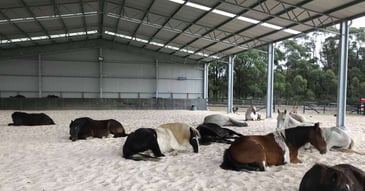
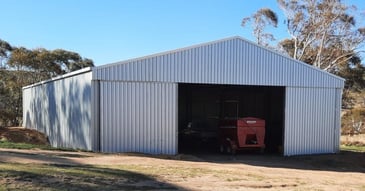

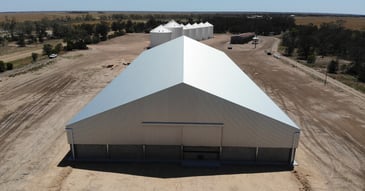
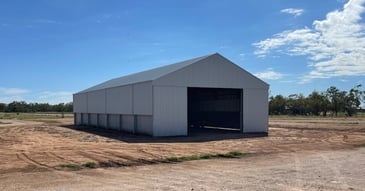
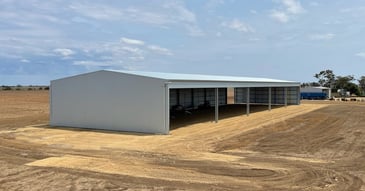
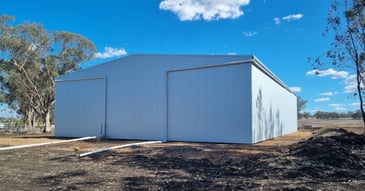
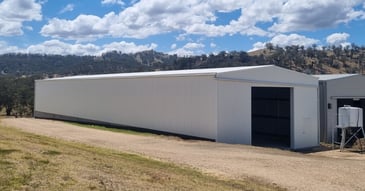
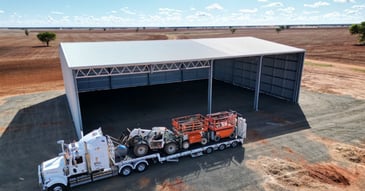
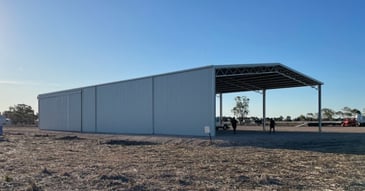

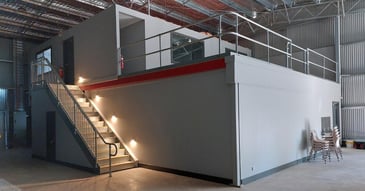
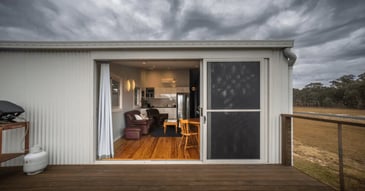


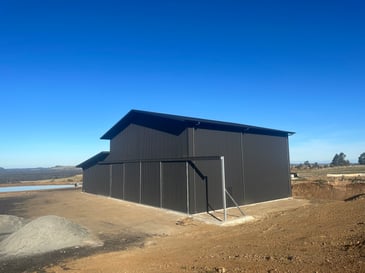
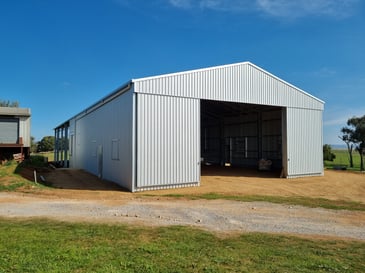
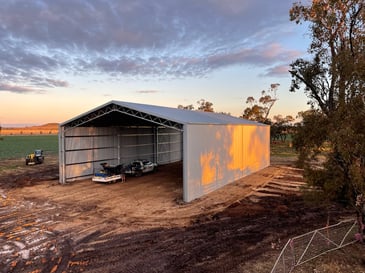
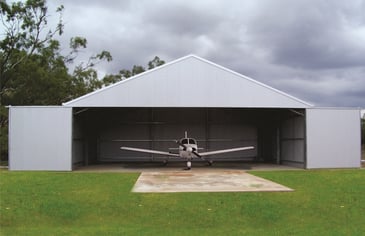
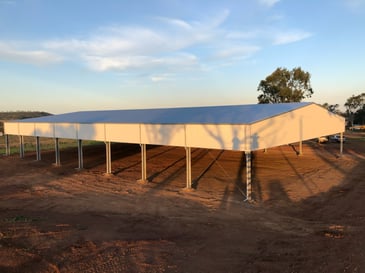
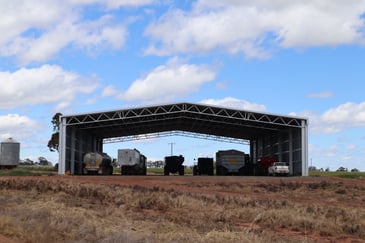
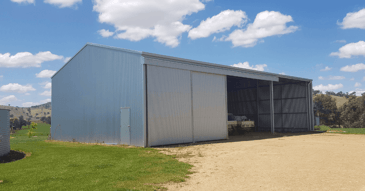
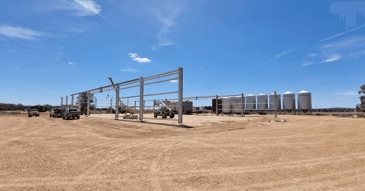
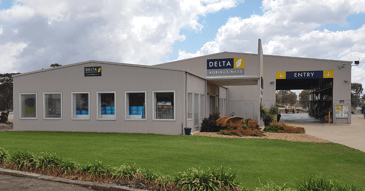

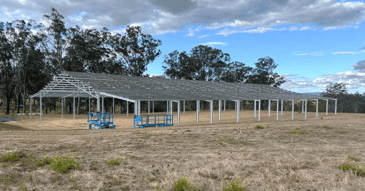
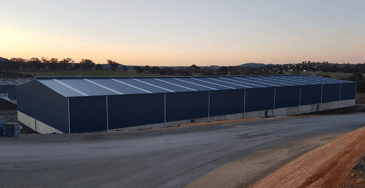
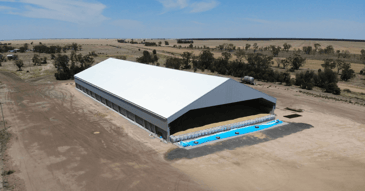
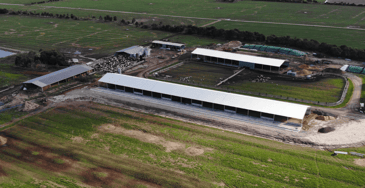
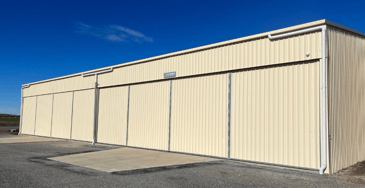
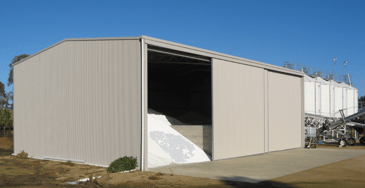
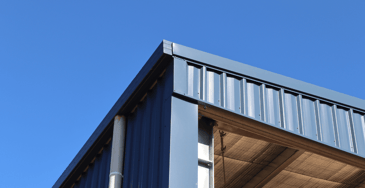

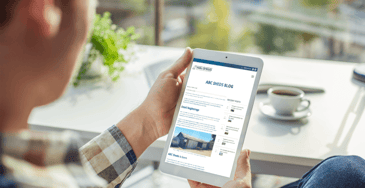
.png?width=365&name=abc_sheds_blog_building%20_a_steel_shed%20(1).png)

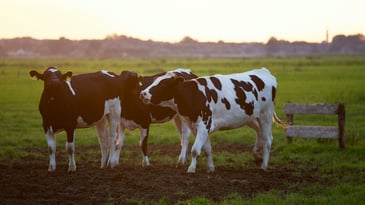
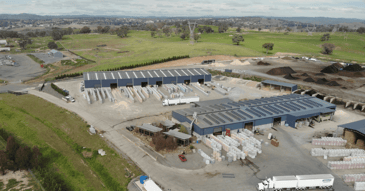
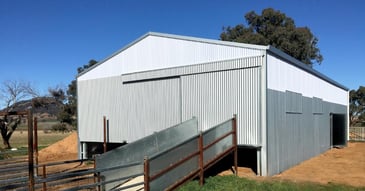
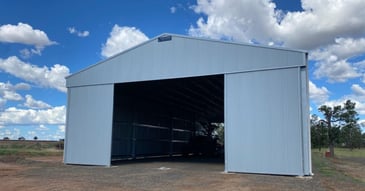
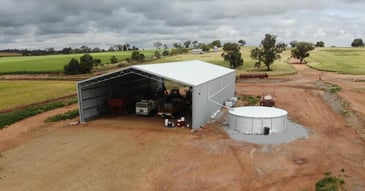
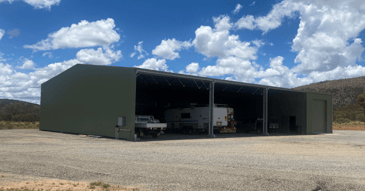
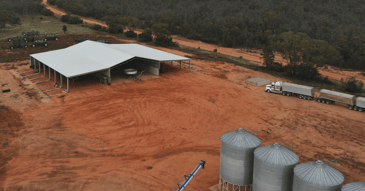
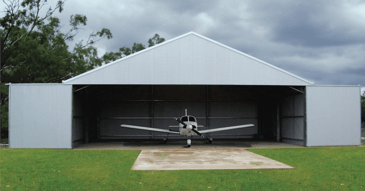
.png?width=365&name=abc_sheds_blog_feature_workshop_sheds_v2%20(1).png)
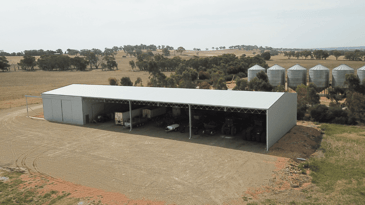
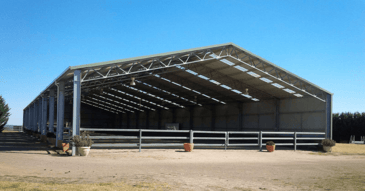
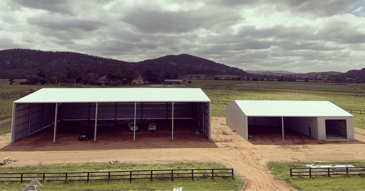
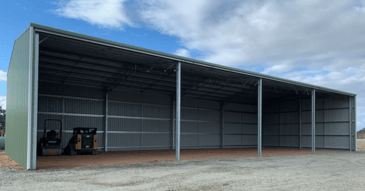
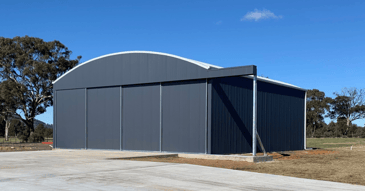
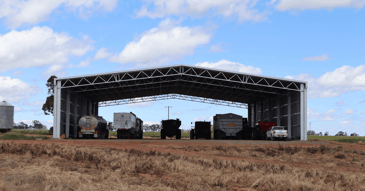
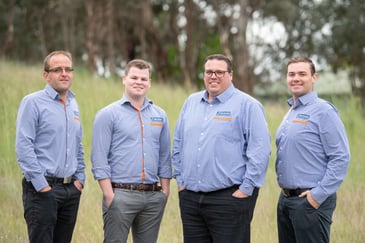

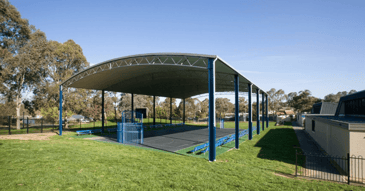

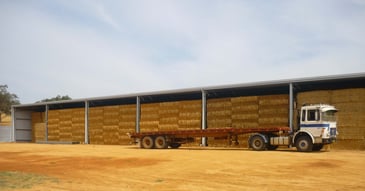
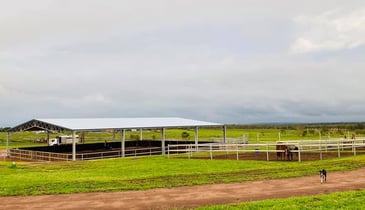
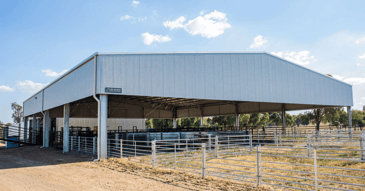
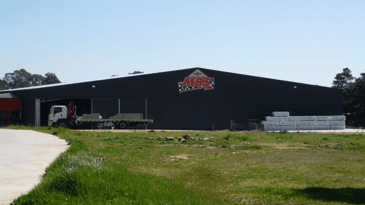
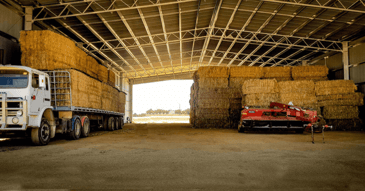
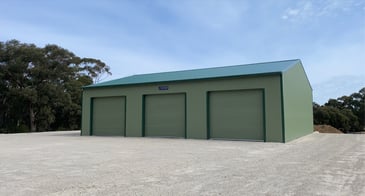

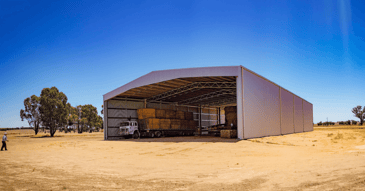
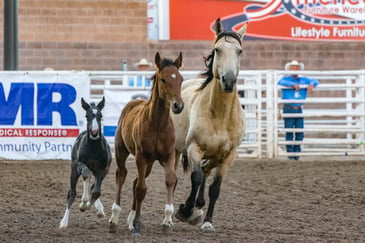
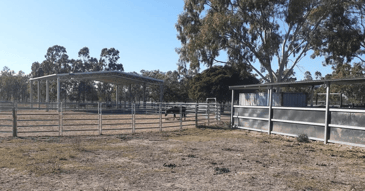
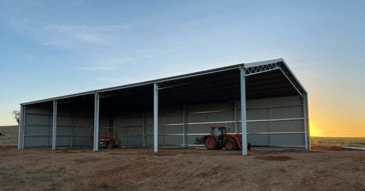
.png?width=365&name=abc_sheds_blog_feature_own_or_lease_aircraft_hangar%20(1).png)
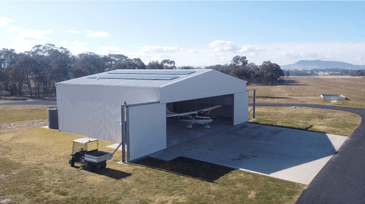
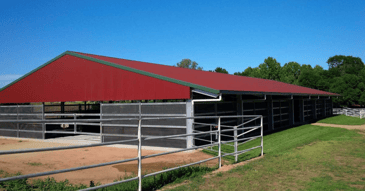
.png?width=365&name=abc_sheds_blog_feature_solar_energy%20(1).png)
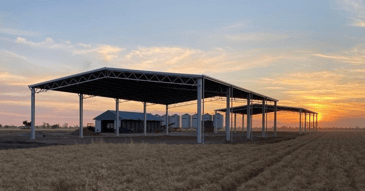
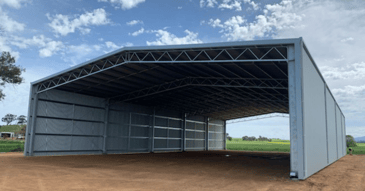
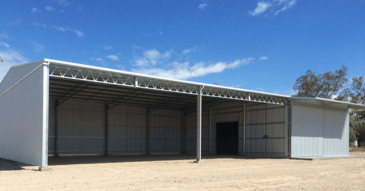
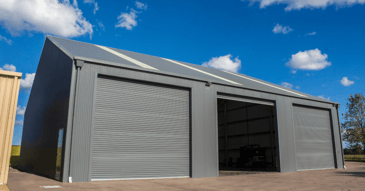
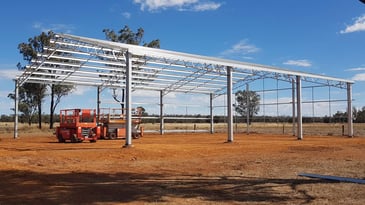
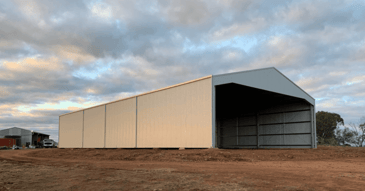
%20(1).webp?width=365&name=abc_sheds_blogs_building_a_hay_shed%20(1)%20(1).webp)
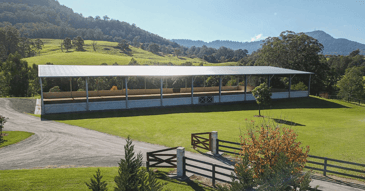
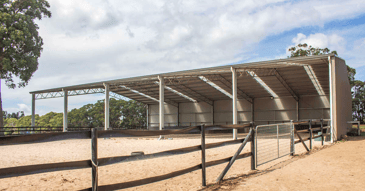
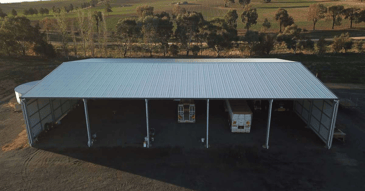

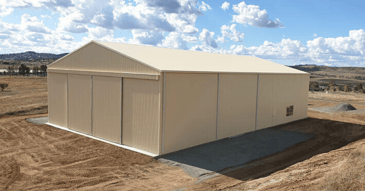
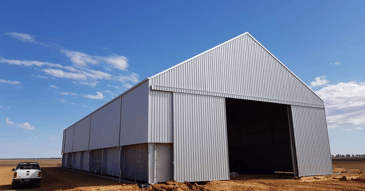

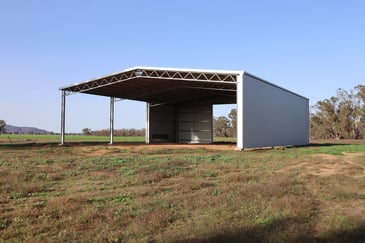
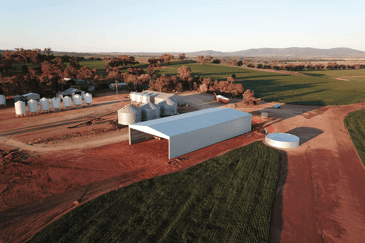
.jpg?width=365&name=abc_sheds_horses_in_paddock_with_shed%20(1).jpg)
